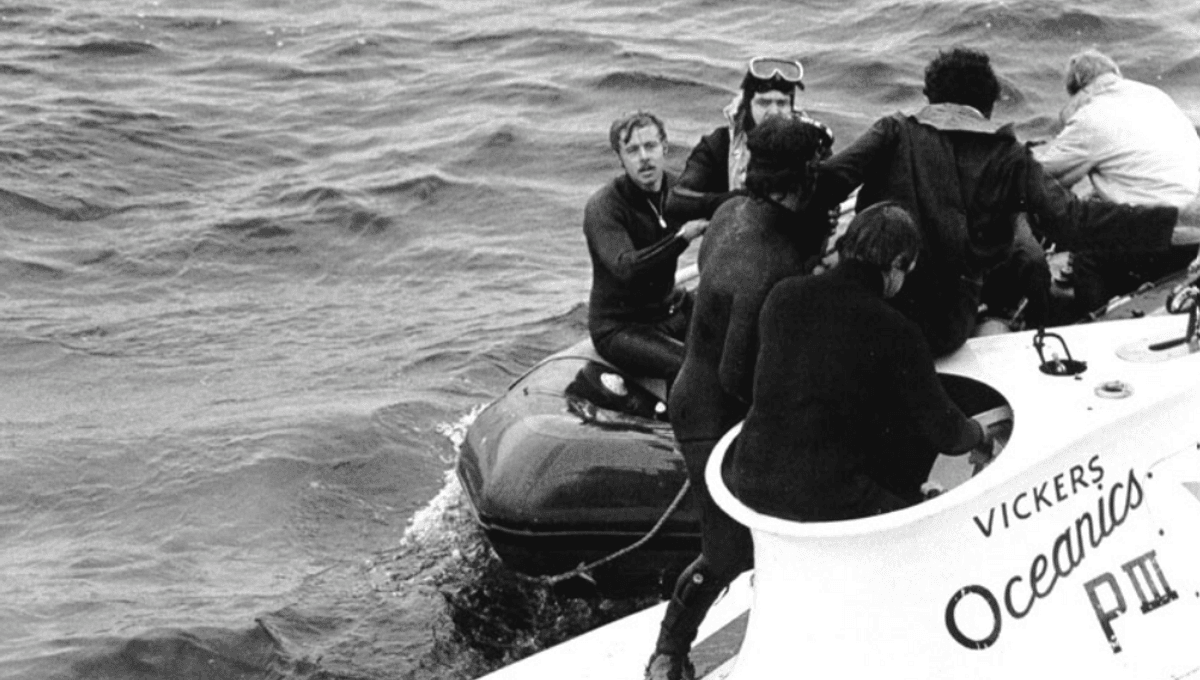
Faced with the vast expanse of the sea and treacherous conditions, rescue missions for lost deepsea craft are notoriously difficult. Even though the recovery of Pisces III – the deepest underwater rescue ever achieved – was successful, its incredible story highlights just how intensely difficult underwater recovery operations can be.
In 1973, two men were stuck on the seabed off the coast of Ireland for over 3 days and were rescued at a point when just minutes of oxygen remained. While the heroic feat may appear to provide hope for the Titantic-searching OceanGate craft that’s currently lost in the Atlantic, the Pisces III was stuck in a significantly easier predicament.
In the early hours of August 29, 1973, two British mariners – Roger Mallinson and Roger Chapman – set out to the Celtic Sea in the submersible Pisces III to lay a transatlantic telephone cable on the seabed around 240 kilometers (150 miles) southwest of Cork in the Republic of Ireland.
Shortly after 9 am, around 8 hours later, the duo was finished with their job and managed to successfully reach the surface – when disaster struck. A hatch was accidentally pulled open, causing a small self-contained cavity of the sub to flood. The submersible became weighed down and it plummetted back to the surface.
“It was very frightening – like a stuka dive bomber with screaming motors and the pressure gauges spinning around,” Mallinson told the BBC in 2013.
“It was about 30 seconds until we hit. We turned the depth gauge off at 500 feet [152 meters] as it could have burst and got cushions and curled ourselves up to try and prevent injuries. We managed to find some white cloth to put in our mouths so we didn’t bite our tongues off too,” Mallinson added
By 9:30, Pisces III had hit the seabed, buried beneath 480 meters (1,575 feet) of water.
The only supplies they had were a can of lemonade and a cheese sandwich. If there was one bit of good news, it was that Mallinson had replaced the oxygen tank just before the dive, meaning they had 66 hours of oxygen left. To avoid using this dwindling oxygen too fast, they tried to move as little as possible and even tried not to speak unless totally necessary.
The pair quickly managed to make contact with the surface, informing them of the situation and ensuring their morale was fine.
Numerous vessels of the UK’s Royal Navy, the US Navy, and the Canadian Coast Guard promptly headed to the Celtic Sea, while Royal Air Force Nimrod aircraft flew overhead. Over the following days, plans were drawn up and Pisces III’s sister submersibles – Pisces II and Pisces V – were delivered to the Celtic Sea.
However, the rescue efforts did not go smoothly.
In the early hours of August 31, Pisces II was set down with a polypropylene rope attached, but it failed to find Pisces III before the rope broke. As the day went on, Pisces V was sent down and met similar problems, running out of power, although a relaunch around 1 pm saw it manage to find the stricken sub.
However, an attempt to attach a rope failed, so Pisces V remained on the seabed with Pisces III. A remotely operated underwater vehicle, CURV III, was brought in but it had an electrical fault so was unable to launch. Pisces V was called back to the surface.
“Pisces V was ordered to the surface just after midnight, which was a bit of a blow,” explained Chapman. “It was like we were back to square one with no one around. Our 72 hours of oxygen was up, we were running out of lithium hydroxide to scrub the CO2, it was very manky and cold and we were almost resigned to thinking it wasn’t going to happen.”
Mallinson and Chapman were just starting to eat their meager supplies when Pisces II and CURV III managed to get back on their feet on the morning of September 1. Together, the pair of subs managed to attach a reliable line to Pisces III.
Amid some aggressive tugging of the lines, they eventually reached the surface in one piece at 1:17 pm.
“Apparently they thought we’d died when they looked at us, it had been so violent,” says Chapman.
“When they opened the hatch and fresh air and sunlight rushed in it gave us blinding headaches, but we were sorted, we were euphoric. But we were also a bit pathetic. It was quite difficult to climb out of the sub, we’d been so cramped up, we could hardly move,” he continued.
The mission was a success, but the story highlights just how thorny these kinds of rescues can be. The rescue of Pisces III is also substantially easier, at least on paper, compared to the ongoing recovery mission of the OceanGate diving craft.
Firstly, the rescue crew for Pisces III had a pretty good idea of where the submersible was laying – far from the case currently with the OceanGate craft, in which the search area is colossal and no contact has yet been made. Secondly, the waters around the wreck of the Titanic where OceanGate was exploring are significantly deeper than those where Pisces III was lost.
Mallinson, now 85 years old, is still alive today and has recently shared his thoughts on the going situation with OceanGate. Unfortunately, his prognosis is not optimistic.
“That is horrendous. I can’t understand why they haven’t transmitted some signal of some sort,” he told Sky News.
“I have a horrible feeling that something might be seriously wrong.”
Source Link: Pisces III: Deepest Underwater Rescue Ever Showed How Difficult These Missions Can Be